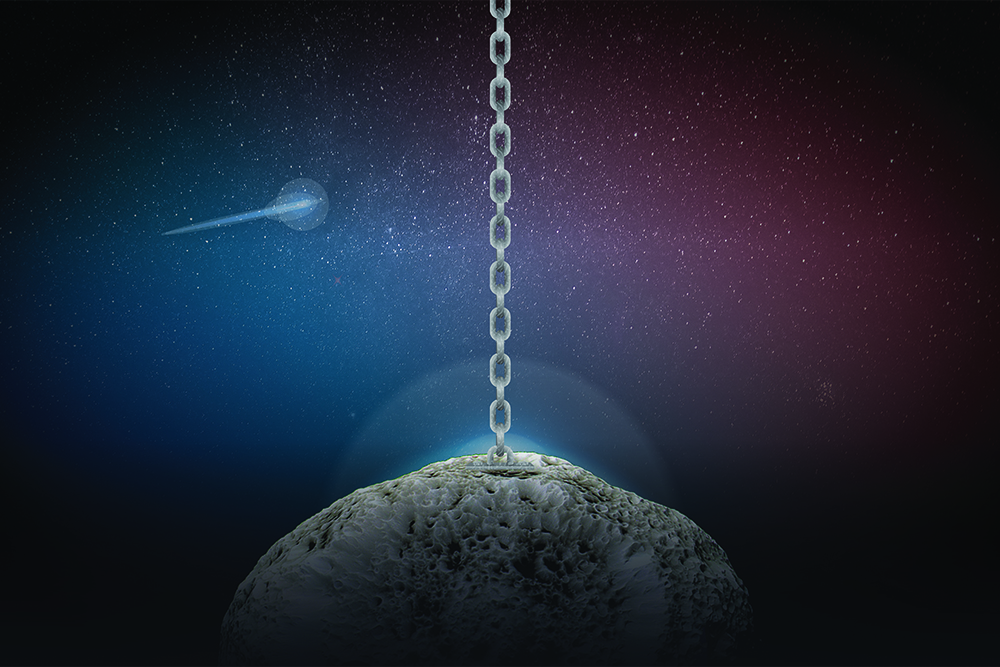Space Anchor: UI team challenged to design tools to use in space
September 21, 2017
Designing tools that could one day be used in space is quite a lofty goal, but one small group on campus aims to do this every year.
The Illinois Space Society has six different projects that an interested student can join. One of these projects is a yearly NASA challenge called Micro-g. Students are given the challenge of designing a tool or machine that can be used in space.
After going over all of the options, the group has chosen to work on an anchoring device that could be used for exploring a new asteroid by being dug into the ground and then hooking on a tether.
The group designs and builds the device all school year. In June, a team of six are flown out to Houston to test it out at the Neutral Buoyancy Lab of the Johnson Space Center.
At the lab, specialists try out the tool inside of a pool — in order to simulate zero gravity — and drill it into a box of sand and rock to test how far it will go into a surface. If the tool works better than any previous tool they have seen, it could be used one day in space.
Get The Daily Illini in your inbox!
Sara Legg, junior in Engineering, is one of the students who worked on the project.
“The way this competition works is we basically sign away a statement of rights so that NASA can use whatever they like,” Legg said. “They collect a collection of all of these tools, and if they like any designs, they can use them for other tools that they like.”
The University has taken a team to the NASA challenge for three years now. According to Legg, the tool from the team two years ago worked so well that it was tested on the ocean floor.
She said her team submitted a proposal for the competition in November and made design changes until February. In March, they built it in the manufacturing lab on campus and then ran tests and made changes up until June.
The team met once a week during the fall semester to work on designs. As they started putting it together in the spring semester, they would schedule meetings when necessary.
Destiny Fawley, sophomore in Engineering, who also worked on the project, said several papers were due throughout the year for the project.
“When the papers were due, we all had to really crack down,” she laughed, saying the team would pull all-nighters in order to finish them on time.
Legg said finally presenting their tool to the judges was quite an experience.
“We basically pitched our idea to the staff that was there and showed them how it worked, literally how everything worked down to the tiniest screw,” she said.
She said she was worried about their tool because they had made changes just two days beforehand, but it actually turned out better than expected.
“When we went down to test it, all of the divers were like, ‘This is such an easy tool to use,’ because instead of having to continue to twist, all you have to do is move it back and forth,” Legg said.
Fawley said visiting the NASA lab was a great way to network and get advice. The team members were emailed and told to put Micro-g on their resume because it would notify NASA employers about their experience.
They also got to talk to teams from other schools, ranging from community colleges to other large schools, about their designs.
Fawley said she hoped to get the same challenge this year so they could improve the same device and enter it again. Unfortunately, they will have to pick a new challenge and start from scratch.
The five challenges the team can choose from next year include a module leak repair system, sharp edge detection, neutralizing, zip tie cutters and under ice sampler.
Legg said the team has yet to meet and decide which challenge to start designing for. She said she hopes to volunteer next year, but Fawley is unsure. Because NASA wants new faces to experience the challenge each year, only two team members are allowed to return.
Because of this, the club is looking for new members to help out and hopefully travel down to Houston at the end of the year. They brought out a device from a past year for Quad Day to show students what they do.
They hope to get a team together soon so they can start planning and designing their next device.
“We hope that our design gets used for actual space tool application because we think it’s pretty and that it’s a good design,” Legg said. “We had a lot of fun working on it.”







